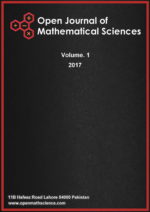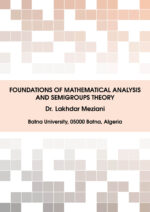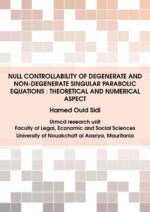Ptolemy Scientific Research Press (PSR Press)is a highly regarded publisher of scientific literature dedicated to bringing the latest research and findings to a broader audience. With a focus on cutting-edge research and technology, Ptolemy Scientific Research Press offers a range of publications catering to professionals, researchers, and student’s needs. Whether looking for information on the latest breakthroughs in physics, biology, engineering, or computer science, you can trust Ptolemy Scientific Research Press to deliver insightful, accurate, and engaging content. With its commitment to quality, accessibility, and innovation, Ptolemy Scientific Research Press is an essential resource for anyone interested in science and technology.

Latest Published Articles
OMS-Vol. 4 (2020), Issue 1, pp. 273 – 279 Open Access Full-Text PDF
Komi Agbokou, Kossi Gneyou, Kokou Tcharie
Abstract: A state of health emergency has been decreed by the Togolese government since April 01 for a period of 3 months, with the introduction of a curfew which ended on June 9, following the first case of contamination of the corona Sars- Cov-2 in Togo, case registered on March 06, 2020. This first wave of contamination started from March 19. The data observed in Togo are cases tested positive and which are cured using a protocol based on the combination of hydroxychloroquine and azithromycin. This manuscript offers a forecast on the number of daily infections and its peak (or maximum), then the cumulative numbers of those infected with the covid’19 pandemic. The forecasts are based on evolution models which are well known in the literature, which consist in evaluating the evolution of the cumulative numbers of infected and a Gaussian model representing an estimate of the number of daily infections for this first wave of contamination. over a period of 8 months from the sample of observed data.
OMS-Vol. 4 (2020), Issue 1, pp. 261 – 272 Open Access Full-Text PDF
Gabriel Obed Fosu, Emmanuel Akweittey, Albert Adu-Sackey
Abstract: During the early phase of Covid-19, the transmissibility of the coronavirus disease was estimated using the classical SIR and SEIR models. However, with the advent of some controlling measures in its informative stages, these classical compartmental models have been ameliorated to provide accurate insight of the coronavirus disease. The paper seeks to derive the basic reproductive formulas for these improved models using the matrix approach. These transmissibility equations detail the dynamics of the coronavirus disease for all phases of the pandemic; either the infected population is on lockdown or not; either infectious persons are quarantined or not; either a vaccination program has been rolled out or yet to be rolled out. With the availability of data, any of these transmissibility equations could be adopted to report on the endemicity of the coronavirus disease.
OMS-Vol. 4 (2020), Issue 1, pp. 253 – 260 Open Access Full-Text PDF
Qi Liu, Shaomo Zhuang, Yongjin Li
Abstract: We introduce the generalized von Neumann-Jordan constant of a quasi-Banach space \(X\). Also, the quasi-Hilbert characteristic is introduced. An attempt has been made to investigate the relationship between them. At the end, a characterization of uniformly non-square is given.
OMS-Vol. 4 (2020), Issue 1, pp. 248 – 252 Open Access Full-Text PDF
Abalo Douhadji, Yaovi Awussi
Abstract: We study the foreign measures in general by proving all operations possibilities with their characteristic relation \( \perp \) and deduce that the set of foreign vector measures is a subset of bounded vector measures; stable par linear combination.
ODMA-Vol. 3 (2020), Issue 2, pp. 50 – 67 Open Access Full-Text PDF
Michael Cary
Abstract: This paper serves as the first extension of the topic of dominator colorings of graphs to the setting of digraphs. We establish the dominator chromatic number over all possible orientations of paths and cycles. In this endeavor we discover that there are infinitely many counterexamples of a graph and subgraph pair for which the subgraph has a larger dominator chromatic number than the larger graph into which it embeds. Most importantly, we use these results to characterize all digraph families for which the dominator chromatic number is two. Finally, a new graph invariant measuring the difference between the dominator chromatic number of a graph and the chromatic number of that graph is established and studied. The paper concludes with some of the possible avenues for extending this line of research.
OMA-Vol. 4 (2020), Issue 2, pp. 42 – 55 Open Access Full-Text PDF
Justin G. Trulen
Abstract: Recently, asymptotic estimates for the unimodular Fourier multipliers \(e^{i\mu(D)}\) have been studied for the function \(\alpha\)-modulation space. In this paper, using the almost orthogonality of projections and some techniques on oscillating integrals, we obtain asymptotic estimates for the unimodular Fourier multiplier \(e^{it(I-\Delta)^{\frac{\beta}{2}}}\) on the \(\alpha\)-modulation space. For an application, we give the asymptotic estimate of the solution for the Klein-Gordon equation with initial data in a \(\alpha\)-modulation space. We also obtain a quantitative form about the solution to the nonlinear Klein-Gordon equation.








